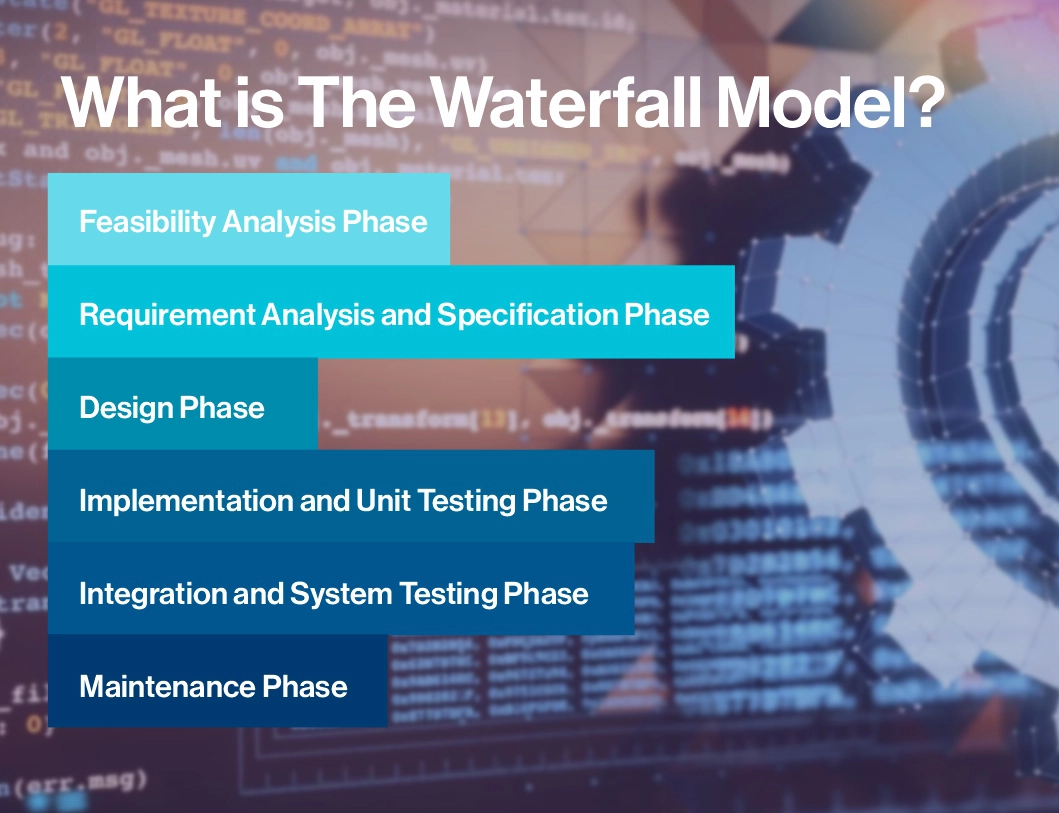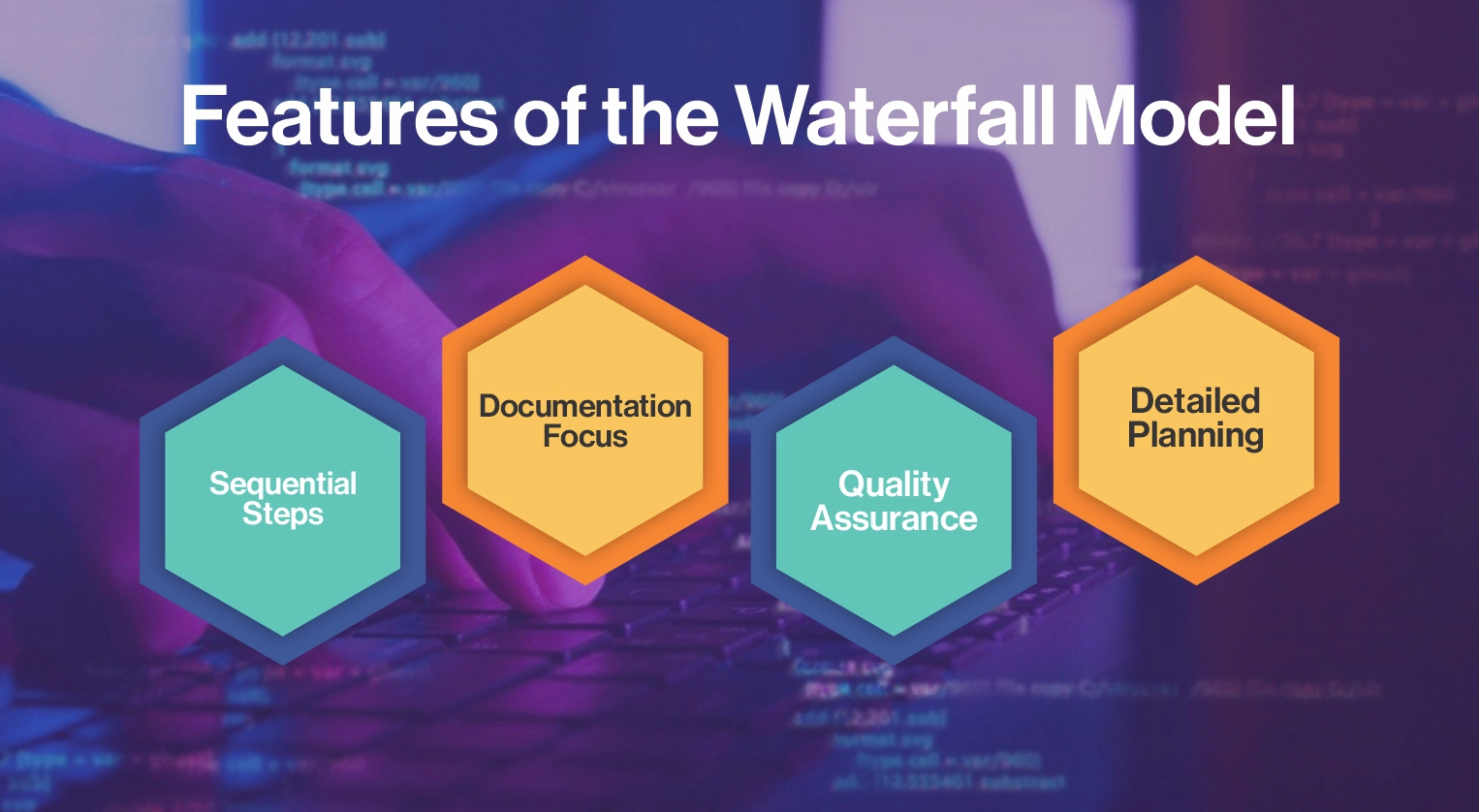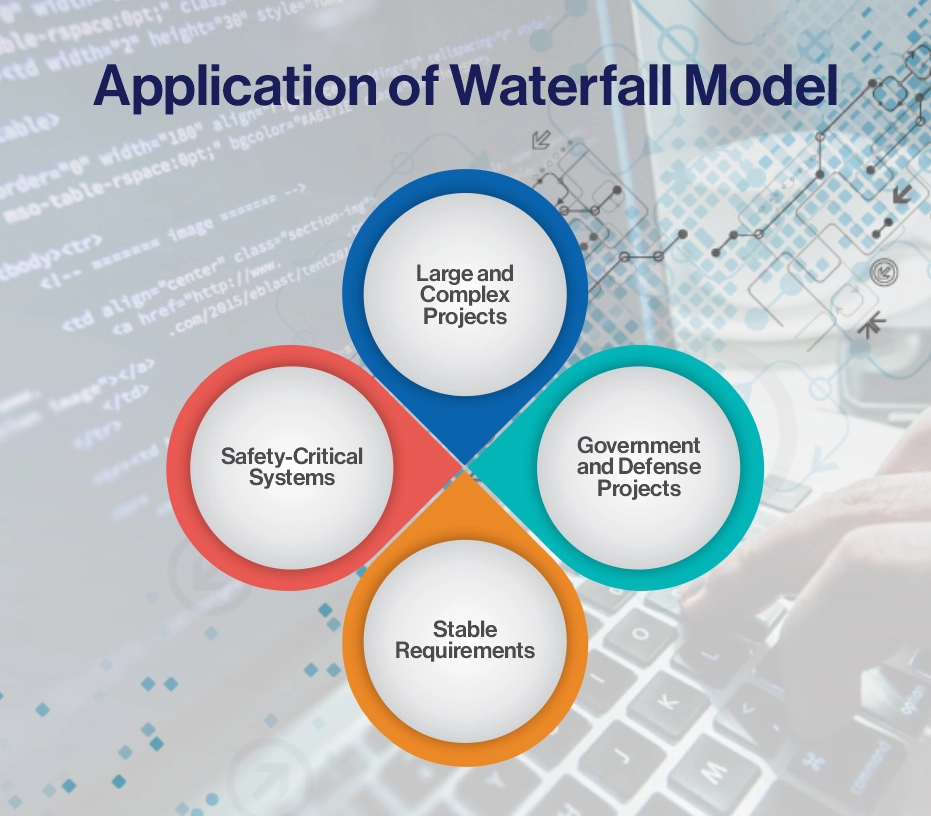The Software Development Life Cycle (SDLC) represents a well-structured methodology for creating and delivering top-notch software products. Within this spectrum, various SDLC models offer diverse approaches to software development. Among these, the waterfall model stands as a classic and early entrant.
Operating sequentially, the waterfall model follows a step-by-step approach to software or application creation. While newer, more contemporary models have gained prevalence, the use of the waterfall model has dwindled.
The Waterfall model, documented by Dr. Winston W. Royee in 1970 and later refined by Barry W. Boehm in 1976, is the most popular and the first introduced software development life cycle (SDLC) model, which is widely used in the software industry.
The Waterfall project management model is the first software development methodology used for software development. Earlier, this model was very popular, but its popularity has waned over recent years in favor of more agile methodologies. But still, its importance remains because all other SDLC models are based on the classical waterfall model. The waterfall model vs agile model both have their own advantages and disadvantages but play a vital role in the successful completion of a software development project.
In this guide, learn all about waterfall model and how it’s used in software development and IT outsourcing service.
What is The Waterfall Model?
The Waterfall methodology, also known as the Waterfall Systems Development Life Cycle (SDLC) model, is a sequential or linear development process that flows like a waterfall through all phases of a project, where each phase must be completed before the next phase can begin. In short, overlapping cannot happen in the waterfall model.
Just like a waterfall filling lower-level pools, phases from the Waterfall model flow from one phase to another, and like the pools filling completely before water spills into the next pool, the Waterfall model completes one phase before another phase can begin.
Several software project outsourcing companies employ the waterfall model in software engineering. Tech outsourcing companies use the waterfall model to streamline the development process and lower IT outsourcing cost.
The different phases of the Waterfall software development model are shown in the figure below, which demonstrates the entire waterfall model process:
The activities involved in different waterfall model phases are as follows:
1. Feasibility Analysis Phase
Feasibility analysis or feasibility study is the foundation upon which the project resides. A feasibility study is an assessment of the project’s practicality. It is conducted to uncover the strengths and weaknesses of the project or the business. It tells whether the project is worth the investment or not. For example, in some cases, projects may not be doable or may cost more than an organization would earn back by taking on a project that isn’t profitable.
In short, the goal of this phase is to determine whether it would be financially and technically feasible to develop the project.
2. Requirement Analysis and Specification Phase
This phase aims to understand the customer’s exact requirements and document them properly. It is one of the biggest advantages of the waterfall model. The Waterfall model works on the belief that all project requirements can be gathered, analyzed, and understood upfront. The Requirement analysis and specification phase consists of two different activities: –
- Requirement Gathering and Analysis: The software’s services, constraints, and goals are established by consultation with the customer. All the requirements of the software to be developed, in addition to deadlines and guidelines, are discussed with the customer and finalized during this phase. The gathered requirements are then analyzed to remove any incompleteness and inconsistency.
- Requirement Specification: All analyzed requirements are documented in a Software Requirement Specification (SRS) document. The document describes WHAT the application should do, but not HOW it should do it. This SRS document also serves as a contract between the development company and the customer and helps settle any future dispute between them by examining it.
3. Design Phase
The aim of this phase is to transform the SRS document into a Software Design Document (SDD). SDD is created to outline technical design requirements such as architecture, programming language, data source, hardware, network infrastructure, etc. It defines the overall software architecture together with high-level and detailed design. This is the phase where it is determined HOW the project will be developed.
4. Implementation and Unit Testing Phase
The aim of this phase is to translate the models, logic, and requirements defined in the SDD into source code using the designated programming language. Each designed module is coded in small programs called units, and each unit is tested for its functionality, which is referred to as Unit Testing.
If the SSD is complete, the implementation phase proceeds smoothly because all the information needed by software developers is contained in the SDD and this might be the shortest phase of the Waterfall model because detailed research and design have already been done.
5. Integration and System Testing Phase
All the units developed in the implementation phase are integrated and this integration of various modules in an incremental way follows various steps. During each integration step, the module is added to the integrated system, and the resultant system is then tested. After all the units have been successfully integrated, the entire system is tested for any faults and failures.
This phase is highly critical as the quality of the project relies on the effectiveness of the testing performed. The better output will lead to satisfied customers and lower maintenance costs.
The system testing consists of three different testing activities: –
- Alpha Testing: Alpha testing is the testing of a system performed by the development team to identify bugs before releasing the project to the customer. It involves end-to-end testing to ensure that the project meets the business requirements and functions correctly.
- Beta Testing: Beta testing is a type of user acceptance testing where the product is released to a limited number of real users of the software to validate it for functionality, usability, reliability, and compatibility in the real environment.
- Acceptance Testing: Acceptance testing, or User Acceptance Testing (UAT) is a level of software testing where the end-user or the customer verifies/accepts the software for delivery. The main purpose of UAT is to validate the system’s compliance with the business requirements.
6. Maintenance Phase
During the Maintenance phase, the customer regularly uses the product to discover bugs, defects, inadequate features, and other errors in the delivered product and make sure it runs smoothly. If the customer comes across issues during use, fixing them is the purpose of this phase. Patches are released to fix the issues and enhance the product, and some better versions are also released. This is an ongoing post-launch phase that extends for as long as the contract dictates.
Read our expert guide on:
Saas Product Development Benefits
Why Do We Use Waterfall Models?
The Waterfall model finds its niche in large and intricate projects within information technology. Its structured and step-by-step approach to project management and software development suits scenarios with the following:
- Well-Defined Requirements: When a project’s needs and goals are crystal clear.
- Extensive Projects: Especially beneficial for sizable endeavors with extended timelines.
- Minimal Error Margin: Situations where precision is crucial, leaving little room for mistakes.
- Stakeholder Confidence: Projects where stakeholders demand a high assurance level in the outcome.
Waterfall Model Tools & Software
The Waterfall model relies on specific software and tools for effective management:
Gantt charts are visual aids that align tasks and dependencies across sequential phases. Commonly utilized in management, they outline timelines and subtasks for each phase.
Notable project management software supporting Gantt charts includes:
- Asana
- Jira
- Microsoft Excel
- Microsoft Project
- Microsoft SharePoint
- ProjectManager
- Smartsheet
- Wrike
Also, project management software offers other functionalities vital for Waterfall-based teams:
- Collaboration tools
- Note-taking features
- Support for testing and development
- Data analytics and visualization capabilities
Advantages and Disadvantages of Waterfall Model
Waterfall Model Advantages
- This model is simple and easy to understand and follow as it progresses through easily understandable and explainable phases.
- Phases in this model are processed and completed one at a time, and they do not overlap.
- Milestones and deadlines for each phase in the model are clearly defined.
- Each phase of the model is well documented and well scripted.
- Reinforces good habits to define before design and design before code.
- It works well for smaller projects where the requirements are well-understood and clearly defined.
- The rigidity of the model makes it easy to manage, as each phase has specific deliverables, schedules, and a review process.
- The requirements of the project are explicitly declared in the SRS document, so they remain unchanged during the entire project development, and the customers are not allowed to add new requirements during development.
Waterfall Model Disadvantages
- Once the SRS is signed by the customer early in the cycle, there is no room for feedback or changes in the requirements during the development.
- It can be difficult for customers to state their requirements at the beginning of the project as in the real world the customers’ requirements keep on changing.
- This model reduces efficiency by not allowing phases to overlap.
- It is not a good model for complex, high-risk, long, ongoing, or object-oriented projects.
- Extensive documentation during each phase occupies a lot of developers’ and testers’ time.
- Testing starts quite late in the cycle after the completion of the development phase, and if bugs and design issues are detected, it is very difficult to go back and change something that was not well thought out in the early phases.
- No working product or prototype is demonstrated immediately to the customer.
Features of the Waterfall Model
- Sequential Steps: It follows a step-by-step process where each phase is finished before moving to the next.
- Documentation Focus: Emphasis on thorough documentation to clarify goals and project direction.
- Quality Assurance: High priority is given to testing and quality control at each project stage.
- Detailed Planning: In-depth planning defines scope, timelines, and project outcomes closely.
This method suits structured and complex projects, ensuring timely completion with high quality and customer satisfaction.
When to Use Waterfall Model?
The Waterfall model suits specific scenarios:
- Clear Requirements: When project needs are well-defined and fixed.
- Stable Product Definition: The product specifications remain constant.
- Known Technology: Familiarity with the technology used in the project.
- Absence of Ambiguity: Clear and precise requirements without ambiguity.
- Ample Skilled Resources: Sufficient skilled resources available.
- Short Projects: Ideal for shorter duration projects.
However, it has limitations:
- Limited Customer Involvement: Less interaction with customers during development.
- Late Demonstration: End users see the product only after development.
- Costly Fixes: High costs for fixing issues post-development due to comprehensive updates.
The Waterfall model is being replaced by more adaptable models like iterative and agile methodologies in today’s dynamic environment.
Application of Waterfall Model
The Waterfall model finds application in:
Large and Complex Projects
Well-suited for sizable software projects needing a structured, linear, and step-by-step approach, ensuring timely and budgeted completion.
Safety-Critical Systems
Vital for systems in fields like aerospace and medical sectors, where errors can have severe consequences.
Government and Defense Projects
Suitable for projects in these sectors that demand strict adherence to specified requirements.
Stable Requirements
Projects with clearly defined and unwavering requirements benefit from this model.
Read our expert guide on:
In-House Vs Outsourcing Software Development
Conclusion
The Waterfall Model indeed provides clarity, predictability, and documentation advantages, making it a suitable choice for stable projects with well-defined requirements, particularly in regulated industries. However, its rigid structure and susceptibility to late-stage discrepancies highlight the need to choose methodologies that align with a project’s fluid dynamics, ensuring successful software development in an evolving landscape.
To sum up, the waterfall model helps identify the requirements of the project in an efficient manner and ensures seamless development of all the phases. From understanding the functional and non- functional requirements to incorporating the project’s scalability, the waterfall model ensures enhanced workflow and completion.
FiveRivers Technlogies is one of the best software outsourcing companies with over 20 years of experience in providing custom software solutions. Being among the top IT outsourcing service companies, we have delivered over 500+ custom solutions.










